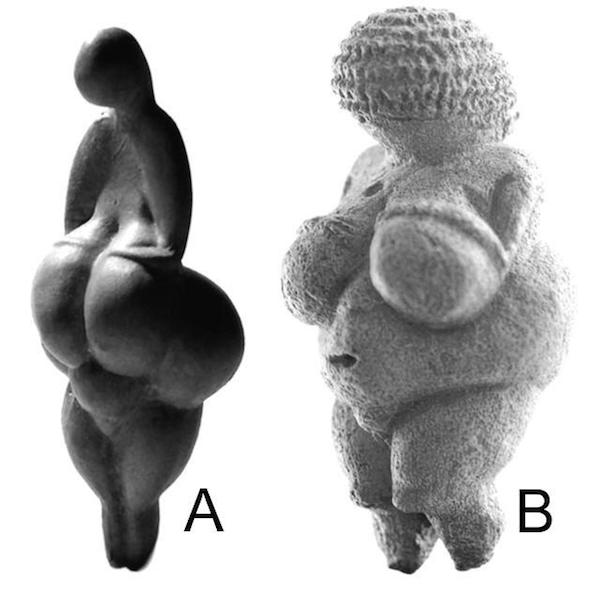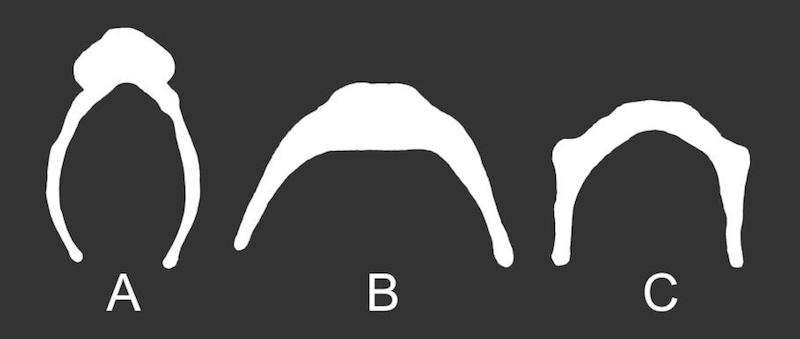The Technologies of Symbolic Communication
Episode #5 of the course Technologies that transformed humanity by Richard L. Currier, PhD
In this lesson, we will see how anatomically modern humans developed visual and verbal symbolism, invented cultural traditions of art and design, learned how to describe the passage of time, and adopted distinct tribal and ethnic identities.
The Birth of Human Symbolism
In some Homo erectus sites dating from 500,000 years ago—and in many Neanderthal sites 100,000 years old—paleontologists have found simple designs on bone and shell that may have heralded the use of symbols. But when the Cro-Magnons appeared about 50,000 years ago, there was suddenly plentiful evidence that prehistoric people had truly mastered the technologies of symbolism.

This prehistoric horse’s head, carved from reindeer antler 15,000 years ago, testifies to the amazing artistic skills of the Cro-Magnons.
Human figurines were carved out of stone or ivory and molded out of clay. Bracelets and necklaces were made from shells and animal teeth drilled with holes and colored with pigments. Utilitarian objects were carved into the likeness of animals. Cave walls were decorated with symbolic designs and adorned with paintings of mammoths, rhinoceroses, bison, and reindeer—all rendered with such masterful realism that for years, they were denounced as forgeries by some of the most esteemed paleontologists of the 19th century.
The “Venus Figurines” of the Cro-Magnons
The “Venus figurines” are among the best-known examples of prehistoric art. These voluptuous statuettes, carved from ivory or stone and only a few inches tall, have no faces and only suggestions of arms and legs. Yet they have exaggerated female body parts associated with sex and reproduction: huge pendulous breasts, swollen bellies, massive thighs, immense buttocks, and prominent genitalia.

Two prehistoric “Venus” figurines, one from France (A) and the other from Germany (B), reveal the distinct artistic styles of different prehistoric cultures.
Venus figurines have been found in Paleolithic sites from France to Siberia, beginning 40,000 years ago and continuing for another 30,000 years—six times longer than the entire history of human civilization. These figurines, all expressing the same essential symbolism over this incredible span of time and space, were created with differing artistic styles, indicating that human groups had suddenly formed many distinct cultures and ethnicities.
The Hyoid Bone and the Origins of Spoken Language
Human speech is the ultimate form of symbolic communication. But since the primary organs of speech—the tongue, larynx, and throat—are composed of perishable soft tissues, no remains of these organs have survived from prehistoric times.
However, there is one small bone—located in the upper region of the human throat—that helps control the movements of the tongue and throat and shapes the sounds of human speech. This bone, shaped like a horseshoe, is called the “hyoid bone.”

The chimpanzee’s hyoid bone (A) has a distinctly different shape from the hyoid bones of Neanderthals (B) and modern humans (C).
The hyoid bone of a Neanderthal is extremely similar to the hyoid bone of a modern human, but it is dramatically different from that of a chimpanzee. It’s therefore probable that human speech began 100,000 years ago and that the Neanderthals were the first hominids to develop a true spoken language.
The Narrative Story and the Invention of Agriculture
When humans invented the “narrative story,” they became capable of expressing the passage of time and describing events that occur in a particular sequence. This may explain why humans suddenly began to grow crops and raise animals for food about 15,000 years ago, as the global climate warmed after the last ice age.
Agriculture requires detailed knowledge about the life cycles of plants and animals over time and about the impact of present actions (planting, weeding, watering) on future results (harvesting, storing, preserving). It also requires the ability to communicate these sequences of events to others.
Although dozens of theories have been proposed to explain why agriculture suddenly arose at the end of the last ice age, scientists have never agreed on any single explanation. Perhaps it was the ability of the narrative story to describe the unfolding of events over time that made agriculture possible when the earth grew warm.
In tomorrow’s lesson, you will learn how the invention of agriculture completely transformed human food, shelter, property, family ties, and sexual behavior.
Recommended reading
The Graphics of Bilzingsleben: Sophistication and Subtlety in the Mind of Homo Erectus
Ancient Shells May Be Oldest Jewelry
Recommended book
Cro-Magnon: How the Ice Age Gave Birth to the First Modern Humans by Brian Fagan
Share with friends
